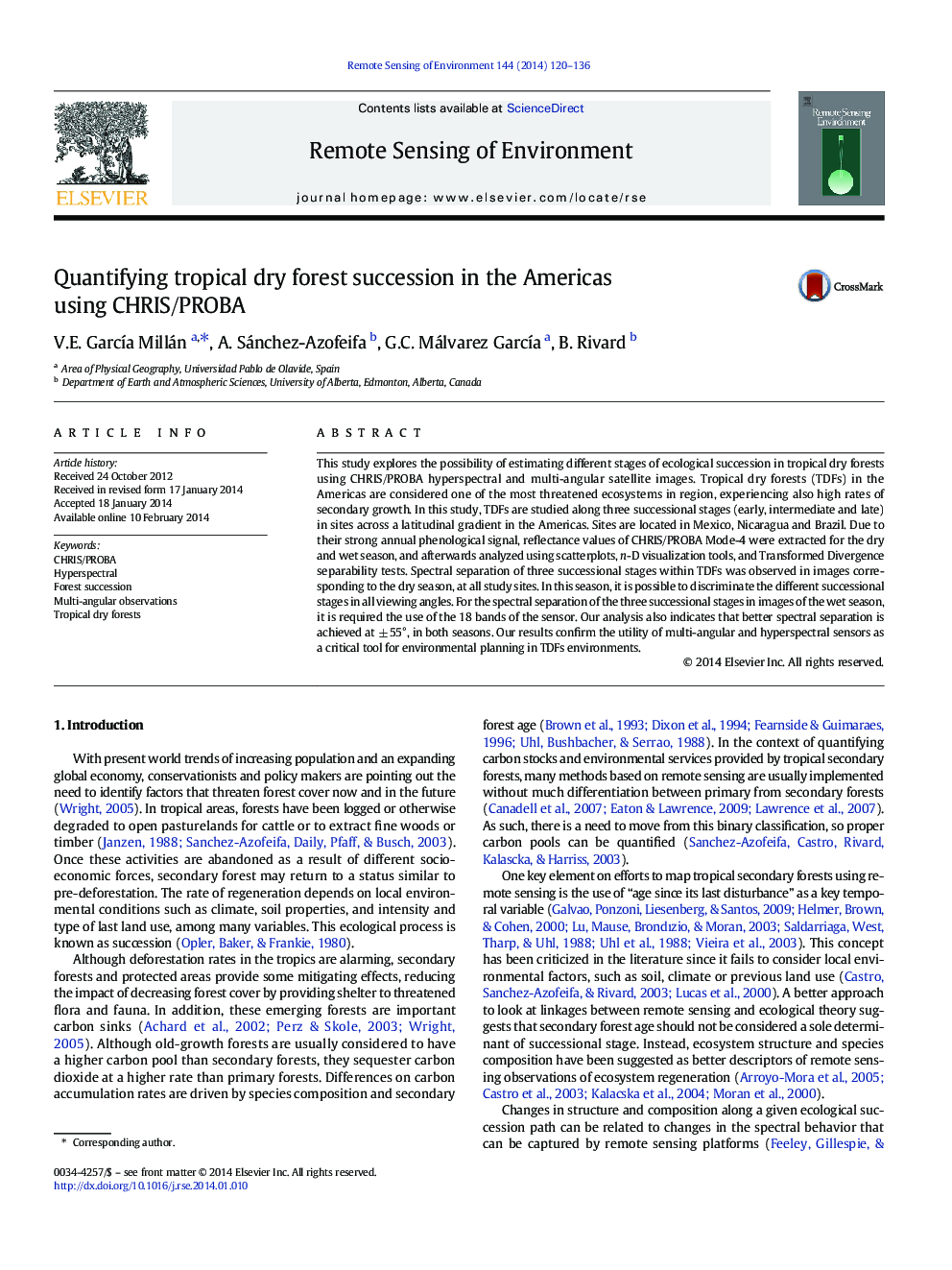| Article ID | Journal | Published Year | Pages | File Type |
|---|---|---|---|---|
| 6346796 | Remote Sensing of Environment | 2014 | 17 Pages |
â¢CHRIS/PROBA's data discriminates successional stages within tropical dry forests.â¢During the dry season there is a better spectral separation of successional stages.â¢Hyperspectral data relates to species' composition and non-photosynthetic elements.â¢CHRIS/PROBA's angular component is related to tree height, LAI and canopy openness.â¢Extreme angles perform better spectral separation of successional stages.
This study explores the possibility of estimating different stages of ecological succession in tropical dry forests using CHRIS/PROBA hyperspectral and multi-angular satellite images. Tropical dry forests (TDFs) in the Americas are considered one of the most threatened ecosystems in region, experiencing also high rates of secondary growth. In this study, TDFs are studied along three successional stages (early, intermediate and late) in sites across a latitudinal gradient in the Americas. Sites are located in Mexico, Nicaragua and Brazil. Due to their strong annual phenological signal, reflectance values of CHRIS/PROBA Mode-4 were extracted for the dry and wet season, and afterwards analyzed using scatterplots, n-D visualization tools, and Transformed Divergence separability tests. Spectral separation of three successional stages within TDFs was observed in images corresponding to the dry season, at all study sites. In this season, it is possible to discriminate the different successional stages in all viewing angles. For the spectral separation of the three successional stages in images of the wet season, it is required the use of the 18 bands of the sensor. Our analysis also indicates that better spectral separation is achieved at ± 55°, in both seasons. Our results confirm the utility of multi-angular and hyperspectral sensors as a critical tool for environmental planning in TDFs environments.
